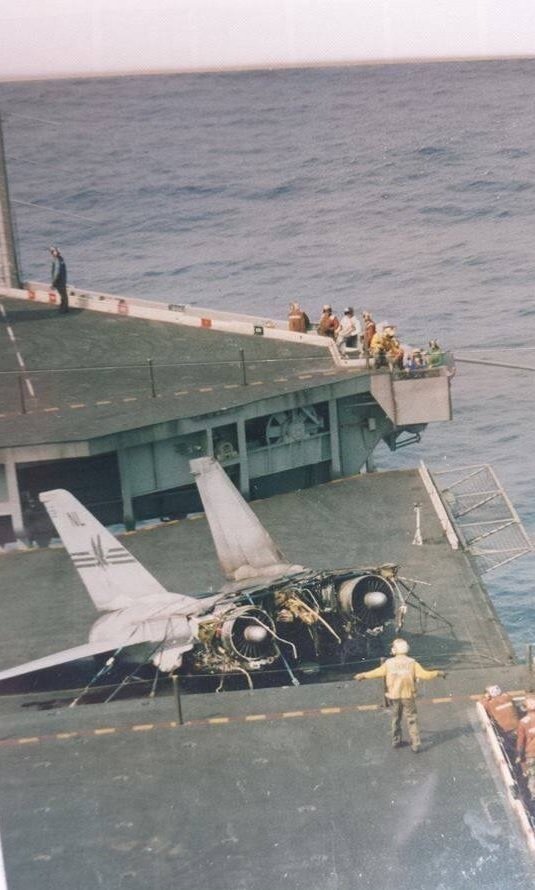“On the night of July 11th as we made our way across the pond, it was a horrible night for pilots ‘behind the boat’ as the deck was pitching 10 feet in both directions…,” Rich Herbst, former F-14A pilot with VF-51 Screaming Eagles.
The photo in this post shows the remains of VF-51 Screaming Eagles F-14A Tomcat BuNo 162602 after a ramp strike upon landing aboard the USS Kitty Hawk (CV-63).
This F-14 ramp strike and subsequent crew ejection took place on Jul. 11, 1994.

According to former VF-51 pilot Rich Herbst, “On the night of July 11th as we made our way across the pond, it was a horrible night for pilots ‘behind the boat’ as the deck was pitching 10 feet in both directions. The pilot, LT “Pig” Arnold, made an unsafe power correction inside the wave-off window, chasing the deck down. When the ship rose back up, he did not have enough power, even at full throttle, to safely wave off. The RIO – LCRD “Animal” Jennings saw what was coming and he initiated ejection just after the plane impacted the round down of the ship. The plane actually caught a wire and split into two pieces, with the engine and back half of the jet left as a burning fireball in the wires. The front half of the jet skidded off of the front of the ship. The animal landed in his chute on the front of the ship next to some parked S-3s. Aside from some minor injuries to his feet due to the landing impact, Animal was fine and flying within a few days. Pig had the unfortunate luck to be brought down in his chute right into the fireball that was burning in the wires. He sustained serious injuries to his hands and neck. He ended up making a full recovery, but never flew Tomcats again.”
Herbst continues: “My stateroom was on the O-3 level right under the “crotch”. I watched the mishap live on the ship’s closed-circuit PLAT TV and will never forget the sound of the scraping metal of the jet going across the deck, above me in my stateroom as we watched.”
Noteworthy original U.S. Navy plans saw VF-51 and its sister squadron VF-111 becoming the first deployable units to transition to the F-14D Super Tomcat, however, these plans were canceled in December 1991 and VF-51 spent the time to its disestablishment (in March 1995) flying the F-14A.
Then following, a horrific video shows the ramp strike described in this article.

